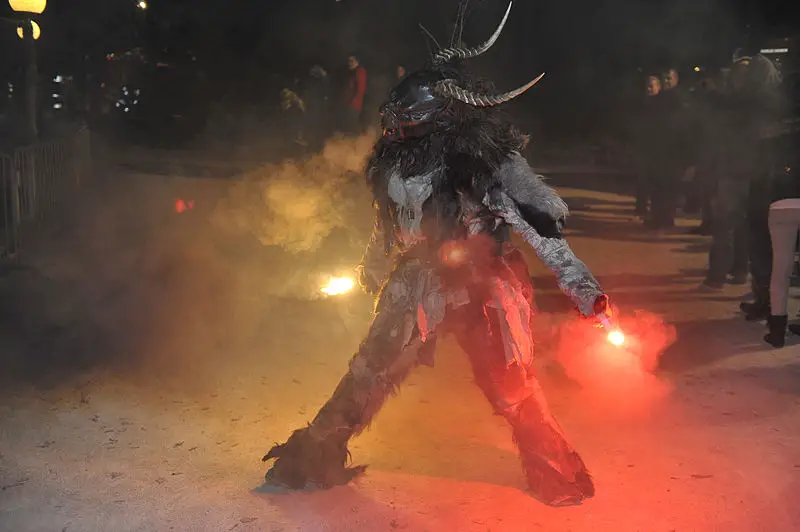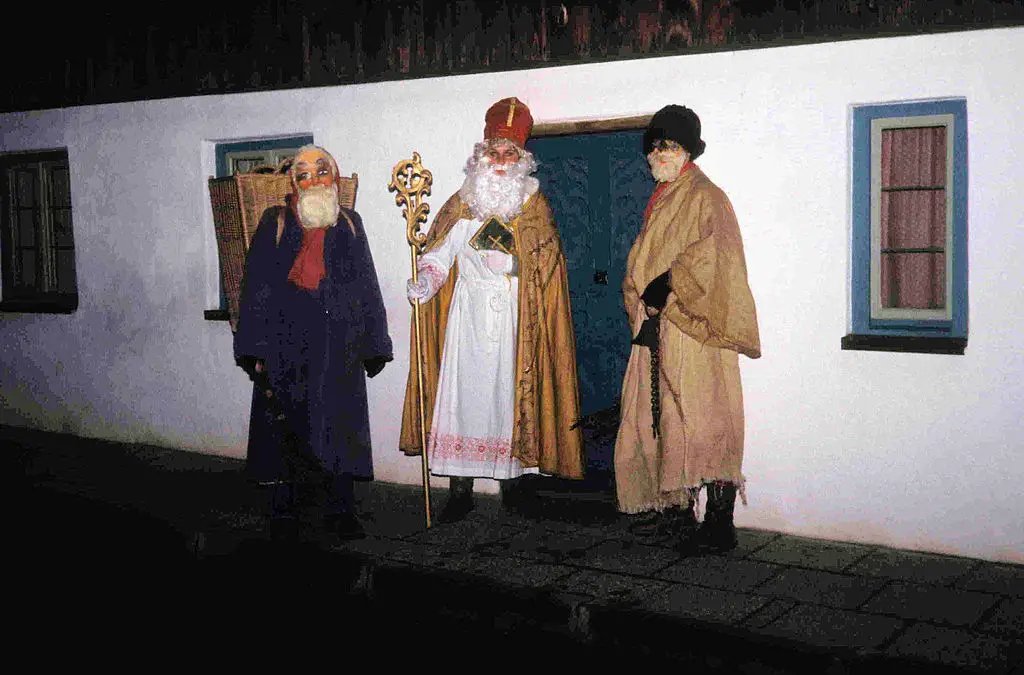
December 6: Sankt Nikolaustag
Thank you to Heather R. Darsie, who is currently researching for a biography of Anne of Cleves and who is a regular contribitor for the Tudor Society, for sharing this article for us today.
6 December is Sankt Nikolaustag, or St. Nicholas’s Day. It is a Roman Catholic holiday that is still celebrated in parts of Germany. St. Nikolaus goes by other nicknames, such as Pelznickel, Belsnickel, and Niglo. Named after the Catholic St. Nicholas, patron saint of children and sailors, this holiday traditionally signifies the beginning of the gift-giving season. Children place their shoes either outside their doors or on windowsills, sometimes with a wish list for St. Nikolaus. The children may also leave treats for St. Nikolaus’s donkey in or near their shoes. In the morning, the shoes are filled with candies and small toys. Sometimes St. Nikolaus is escorted by several Weihnachtsmänner, or Christmas Men, who help St. Nikolaus pass out gifts.
Sankt Nikolaus festivities are sometimes more involved, with the children making small gifts for St. Nikolaus and waiting for him to come to the door. In some parts of Germany, St. Nikolaus comes dressed as a bishop with a flowing beard. He may go to the children’s door and knock to visit with the family. He then asks each child if he or she has been good, and hands out gifts before visiting the next family.
Sometimes St. Nikolaus goes through town with his counterpart, Krampus, the night before. Krampus can be one being, or there can be multiple krampusse. These are evil-looking creatures, who might tease children, and traditionally are sent to punish bad children. Krampus is called Knecht Ruprecht in northern Germany. Of course, the children are not actually punished by Krampus, but he is indeed a scary figure!
Sankt Nikolaus was later replaced by Martin Luther during the Reformation with the Christkindl, or an angelic, Protestant Christ child, who delivered items to children instead of St. Nikolaus. “Christkindl” morphed into the English “Kris Kringl.” Nowadays there is the Weihnachtsmann, or Christmas Man, who is non-denominational and delivers gifts instead of the Catholic Sankt Nikolaus or Protestant Christkindl.
Anna von Kleve, commonly known as Anne of Cleves, may have enjoyed observing Sankt Nikolaustag with her family when she was young. She may have made gifts and sang songs, waiting for the good Saint to come with gifts for her, her sisters, and brother. It is a lovely German tradition that carries on in various forms to today. Do you celebrate Sankt Nikolaustag? What do you do to observe the day?
If you would like to know more about this German tradition, please follow these links:
1. http://www.german-way.com/history-and-culture/holidays-and-celebrations/christmas/saint-nicholas/
2. http://www.stnicholascenter.org/pages/germany/
